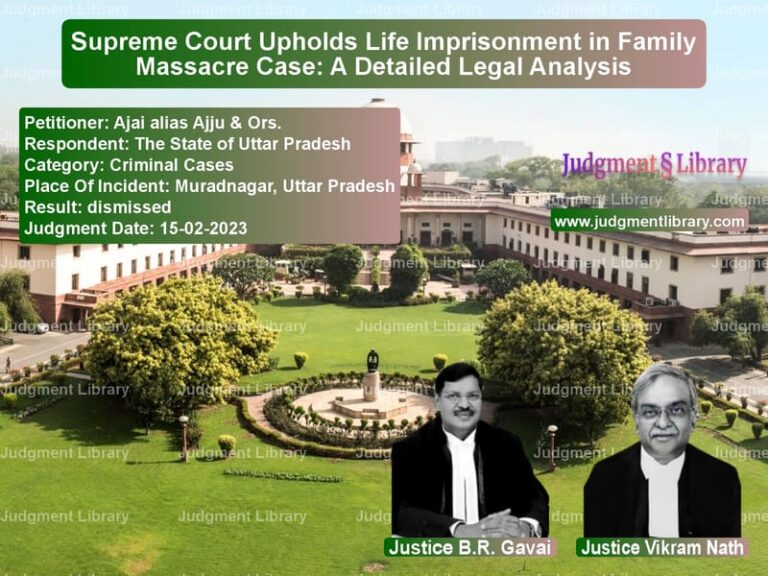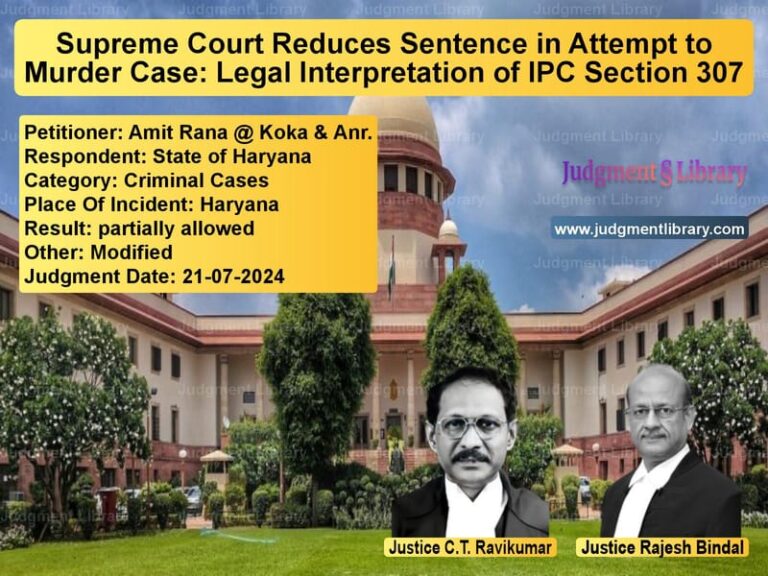Analysis of Armed Forces Tribunal’s Decision on Permanent Commission for Women in the Indian Navy
The case at hand presents a significant issue related to the denial of Permanent Commission (PC) for Short Service Commission (SSC) officers in the Indian Navy, particularly women officers. The petitioners, a group of women officers, challenged the denial of their applications for PC, despite being eligible under certain criteria. The key issue of the case revolves around the fairness of the selection process and the non-disclosure of crucial material in sealed covers during the proceedings before the Armed Forces Tribunal (AFT). This judgment examines whether the AFT acted appropriately in handling these aspects of the case and whether the decision should be reconsidered.
Factual Background
On 26th September 2008, the Ministry of Defence issued a notification declaring that women officers in the Short Service Commission (SSC) would be eligible for the grant of Permanent Commission (PC) prospectively, with certain exceptions. In a prior ruling, the Supreme Court had addressed the issue of whether women officers inducted before 2008 were eligible for PC, ruling that the eligibility should be granted based on specific branches, including Education, Law, and Naval Construction. The 2008 policy was found to be unenforceable for officers inducted before that time.
Subsequently, the Ministry worked on implementing the policy, considering vacancies that had been available since 2015. After considering 306 officers, 80 were granted PC, while others were either not considered or denied PC. This led to petitions from several officers who were denied the opportunity for PC despite being eligible, citing procedural issues and disputes over the selection process.
The Main Legal Issue
The central issue in this case was whether the Armed Forces Tribunal (AFT) could fairly adjudicate the validity of the selection process when relevant materials were provided in a sealed cover and not disclosed to the appellants. This sealed cover contained sensitive data such as the detailed vacancy calculation and selection proceedings, which were critical to determining whether the Navy’s actions were justified.
The Submissions of the Petitioners
The petitioners, represented by senior counsel, argued that the non-disclosure of crucial material—particularly the details about the vacancy calculations and the selection process—severely prejudiced their case. They contended that had they been provided with this information, they would have been able to challenge the accuracy and fairness of the data upon which the selection was based. Specific concerns raised included:
- The failure to consider the highest number of vacancies as per the Supreme Court’s earlier directions in the Annie Nagaraj case.
- The arbitrary clubbing of batches, which skewed merit-based decisions.
- The reliance on Annual Confidential Reports (ACRs) written at times when officers were not eligible for PC, as previously observed by the Court in the Nitisha case.
Additionally, the petitioners highlighted that the Navy had not made distinctions between officers inducted before and after 2008, and the methods used for vacancy calculations were flawed. They also pointed out that the adoption of the 60:40 ratio for Permanent Commission (PC) to Short Service Commission (SSC) officers, as recommended by the AV Singh Committee, was flawed because other parts of the report had not been implemented.
The Respondents’ Arguments
On the other hand, the respondents, represented by senior counsel, argued that the vacancy calculations and selection processes had been conducted correctly according to Navy regulations and the guidelines established by the Supreme Court. They justified the use of a 60:40 ratio based on the AV Singh Committee’s report, which had been implemented in a manner that aligned with the Navy’s long-term goals for maintaining a youthful profile and balanced cadre structure.
They further explained that the Navy had considered the available vacancies, including temporary vacancies, and had adopted a methodology to determine the vacancies over a 15-year cycle to account for the tenure differences between SSC and PC officers. The respondents maintained that the selection process had been applied uniformly to both male and female officers, and there had been no gender bias or unfair treatment in granting PC.
Key Court Observations and Ruling
The Armed Forces Tribunal (AFT) had earlier examined the materials in sealed covers and concluded that the Navy had followed a proper procedure, applying suitable parameters for the grant of PC. It also found no gender discrimination in the selection process. However, the Tribunal relied heavily on information that was not disclosed to the appellants, and this non-disclosure raised concerns about the fairness and transparency of the proceedings.
The Supreme Court observed that the sealed cover procedure, in which critical documents related to vacancies and selection proceedings were not disclosed to the officers, caused substantial prejudice. The Court referred to earlier cases where non-disclosure of material information had been deemed a violation of natural justice, as it denied the affected party the opportunity to challenge the evidence upon which a decision was made.
The Court’s Decision
After considering the arguments and reviewing the AFT’s handling of the case, the Supreme Court concluded that there had been a breach of natural justice due to the failure to disclose the material to the appellants. The Court held that the sealed cover procedure had resulted in grave prejudice to the officers, as they were unable to contest the findings and data that were used to reject their claims for PC. The Court referred to previous rulings where the right to disclosure of relevant material was emphasized to ensure transparency and a fair trial.
The Court ruled that the AFT’s judgment should be set aside, and the matter should be remanded to the AFT for fresh adjudication. The AFT was directed to reconsider the entire matter, taking into account the objections raised by the appellants and ensuring that all relevant material is disclosed to them for proper scrutiny.
Conclusion
The Court’s decision underscores the importance of transparency in judicial processes, particularly in cases that impact the careers and futures of individuals. The use of sealed cover procedures without proper disclosure not only undermines the principles of fairness and accountability but also risks creating an information asymmetry that can heavily bias judicial outcomes. By remanding the case to the AFT, the Court has ensured that the officers will have a fair opportunity to challenge the material relied upon in the decision-making process, providing a clearer path to justice.
Petitioner Name: Cdr Amit Kumar Sharma et al..Respondent Name: Union of India & Ors.Judgment By: Justice Chandrachud, Justice Kohli.Place Of Incident: New Delhi.Judgment Date: 20-10-2022.
Don’t miss out on the full details! Download the complete judgment in PDF format below and gain valuable insights instantly!
Download Judgment: cdr-amit-kumar-sharm-vs-union-of-india-&-ors-supreme-court-of-india-judgment-dated-20-10-2022.pdf
Directly Download Judgment: Directly download this Judgment
See all petitions in Employment Disputes
See all petitions in Workplace Harassment
See all petitions in Public Sector Employees
See all petitions in Promotion Cases
See all petitions in Judgment by Dhananjaya Y Chandrachud
See all petitions in Judgment by Hima Kohli
See all petitions in allowed
See all petitions in Remanded
See all petitions in supreme court of India judgments October 2022
See all petitions in 2022 judgments
See all posts in Service Matters Category
See all allowed petitions in Service Matters Category
See all Dismissed petitions in Service Matters Category
See all partially allowed petitions in Service Matters Category







